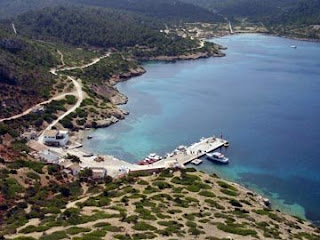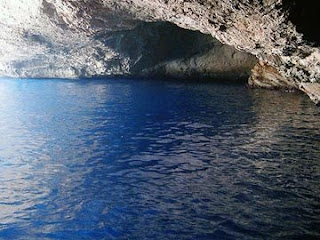When visting Cabrera, located just face to face to Mallorca's southern coast, and its lonely beaches, you might really feel like Robinson Crusoe. Cabrera was declared a nature preserve in 1991, since then access is controlled by ICONA (the Spanish National Institute for the Conservation of Nature).
The archipelago consists of the main island, Cabrera, and 18 smaller islands. With over 450 species of plants and over 150 species of birds Cabrera is a unique and also very sensible ecological system. This is why only a small part of the island around Puerto de Cabrera may be visited by tourists.
Diving is allowed only in the bays Cala Galiota and Es Dimoni, however these are true paradises for divers. Obviously in all the natural preserve it is forbidden to fish, hunt and collect minerals or plants.
There is a tourist information center about the Cabrera-archipelago in Colònia de Sant Jordi on Mallorca, (Centre d'Interpretació de Cabrera ) where potential visitors can get informed on the natural beauties of the islands and the formalities necessary to visit the natural park.

First of all you will need a permission to visit the island. If you book a group travel from Mallorca, there should not be any problem, althought the maximum number of visitors is 200 per day (and in August 300 per day).
If you wish to visit Cabrera individually, for instance with your own boat, you will need to contact the ICONA (Instituto Nacional para la Conservación de la Naturaleza), Plaza España 8, Palma de Mallorca.
Access to some areas of the island is forbidden in any case, as well as fishing or to bring domestic animals. Boats may anchor exclusively in the port of Cabrera, the maximum number of permissions is 50 visitors per day. Last but not least you should not forget to bring food and drinks, as the island's gastronomical offer is reduced to a single small canteen.
In the summer months, Cabrera can be accessed easily with the tourist boats from Colònia de Sant Jordi and Portopetro on Mallorca. Already the boat travel is a unique experience, when you pass the small islands of the archipelago and are accompanied by seagulls and - if you are lucky - dolphins. The first island you reach, after approximately one hour of travel, is Na Foradada a huge rock with a lighthouse on its top. Then you pass S'Illot Pla, Na Pobra, Na Plana, L'Esponja, Conills, the second-largest island of the archipelago, and Na Redona before reaching Cabrera itself.

Finally you have arrived to this untouched paradise and the boat will drop anchor at the natural port Porto de Cabrera which is located at the North-East of the island. The Cape Llebeig with its lighthouse is the reference point for reaching the port.
Next to the port there is a fortress from 14th century which originally served as a defence against pirate attacks. During the war against Napoleon it became a prison for French soldiers - there is a monument reminding of these events. If you want to learn more about the history of Cabrera you can visit the museum.
But the highlight of a visit to Cabrera is certainly the untouched coast with crystalline water .
In the bay Cala Gandulf there is the famous Cova Blava the "blue cave", with unique light reflections in its interiour. Now it is time to have a bath in the sea, and perhaps eat some snack, before you have to leave the islands to return to Mallorca.


No comments:
Post a Comment